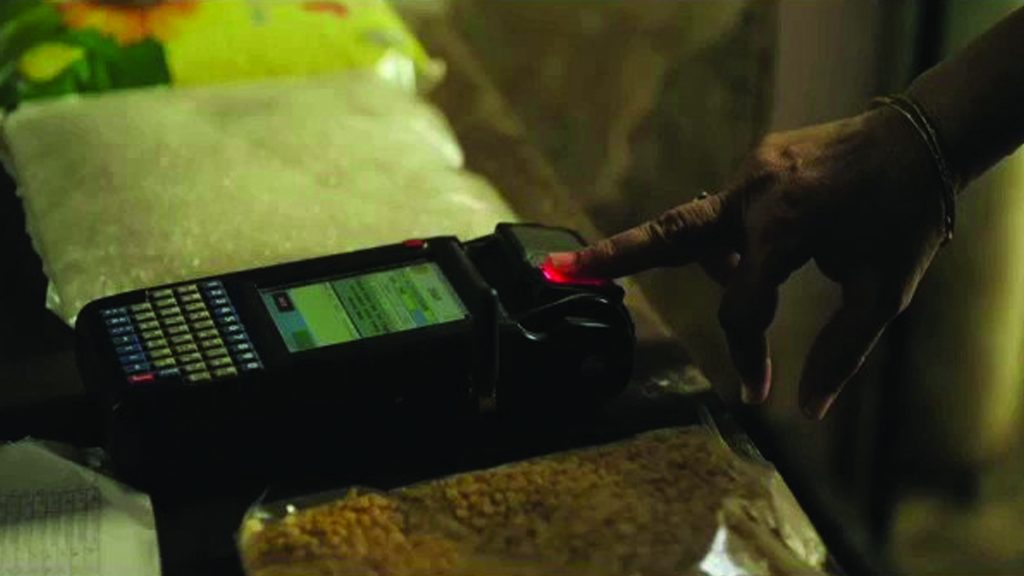Sanjeeb Panigrahi
The Public Distribution System (PDS) had received great thrust in India’s socio-economic policy even before Independence. The idea behind the system stemmed from accountability of the government to ensure that its citizens have access to food through its vast network of fair price shops. The Union government recently decided to roll out ‘One Nation One Ration Card’ (ONORC), which is another excellent initiative in that direction. This pan-India ration card portability scheme sought to enable PDS beneficiaries to get their quota of foodgrains from any ration shop, anywhere in the country, seamlessly.
Many states, including Andhra Pradesh, Gujarat, Haryana, Jharkhand, Karnataka, Kerala, Maharashtra, Rajasthan, Telangana and Tripura have already introduced the facility to ration card holders within the respective states.
The welfare state concept provided in the constitution provides for food security to people; the government seeks to achieve this objective through PDS at affordable prices. India, like many other countries around the world, subsidises consumption of certain food and non-food items for the poor through a wide network of ration shops. The locational heterogeneity and complexity of social relations often create barriers to accessing PDS in India, although right to food is universal.
Besides, the quality of services available at PDS network is substantially inferior and riddled with corruption, pilferage, adulteration of grains, long waits and sometimes even verbal abuse of those queueing up, among other things. The Public Distribution System cries for urgent reform in terms of structural and administrative changes. The ONORC is one such reform that purports to shift the bargaining power from PDS dealers to beneficiaries, since ONORC allows beneficiaries to choose which PDS outlet to buy rations from.
India has the distinction of having the world’s largest food security programme. The government supplies five kilos of subsidised foodgrains to each person per month to over 81 crore people through the five lakh ration shops across the country, costing the exchequer about `1.4 lakh crore annually. Curiously, the current PDS system is location-linked, which often acts as a mighty barrier against access to food entitlements, especially for migrant workers or their families left back home. ONORC is expected to be far more inclusive, and offers barrier-free access to food entitlements to beneficiaries through the proposed ration card portability.
Migrant workers are one of the largest groups (about 38 per cent of India’s population) that is denied access to PDS and a plethora of other social security schemes introduced by the state and Union governments.
‘One Nation, One Ration Card’ is governed by twin principles: Linkage with Aadhaar and digitalisation of ration cards to reach out to the real beneficiaries. However, the fear of exclusion of genuine beneficiaries owing to the new system looms large, especially for migrants and their families left behind at villages. It is imperative that the ONORC should take cue from the national health insurance scheme which has a unique insurance card that takes care of the healthcare needs of migrants as well as their families staying back in their native places.
Despite being a mammoth scheme, the benefits of the PDS continues to elude many migrant workers and their families. The linkage of ration card with a particular ration shop poses the biggest challenge before migrant workers. Although, many states have already allowed intra-state portability, ‘One Nation, One Ration Card’ scheme to be launched nationwide June 2020 is expected to address the issue of portability nationwide.
One big challenge before the ONORC is the lack of concrete data on migrant populations or households insofar as inter-state migration is concerned. The archaic domicile-based legislations governing access to social welfare schemes rolled out by the government need to be amended to keep pace with the objectives of those schemes. The allocation of foodgrains needs to be made dynamic, commensurate with the flow of migrant population.
Another issue likely to adversely affect beneficiaries is differential entitlements offered by the states and the Union government. For example, many states are averse to the idea of granting similar benefits to the migrant population or families as granted to domiciled beneficiaries. One more pertinent issue is if members of one household are split between two locations. Guidelines of the scheme permit the purchase of half the subsidised grain at one time to prevent one member of the household from taking the entire ration for the month, depriving ration to other family members living elsewhere. Additionally, the imposition of certain foods across the country though PDS has been launched to balance food habits of different regions and to improve their nutrition level.
Policymakers and members of the civil society have welcomed the move despite the bottlenecks involved. The government has implemented multiple social security schemes, welfare oriented schemes, food and poverty alleviation schemes; but the migrant labourers, SC/ST and women are the most vulnerable groups that are regularly being deprived of the benefits of such schemes. It is, therefore, imperative that ONORC becomes more inclusive and provides better access to food at the destination. The scheme needs to be more technology-driven in place of manual record keeping. The vision behind the grand scheme is laudable, but operational complexities and speculation about threat to federal structure — a point raised by political leaders — need to be ironed out
systematically..
The writer is an advocate, Supreme Court of India.
